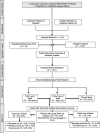Patterns of smell recovery in 751 patients affected by the COVID-19 outbreak
- PMID: 32677329
- PMCID: PMC7405216
- DOI: 10.1111/ene.14440
Patterns of smell recovery in 751 patients affected by the COVID-19 outbreak
Abstract
Background and purpose: Post-viral olfactory dysfunction is well established and has been shown to be a key symptom of COVID-19 with more than 66% of European and US patients reporting some degree of loss of smell. Persistent olfactory dysfunction appears to be commonplace and will drive the demand for general practitioner, otolaryngology or neurology consultation in the next few months - evidence regarding recovery will be essential in counselling our patients.
Methods: This was a prospective survey-based data collection and telemedicine follow-up.
Results: In total, 751 patients completed the study, of whom 477 were females and 274 males. The mean age of the patients was 41 ± 13 years (range 18-60). There were 621 patients (83%) who subjectively reported a total loss of smell and 130 (17%) a partial loss. After a mean follow-up of 47 ± 7 days (range 30-71) from the first consultation, 277 (37%) patients still reported a persistent subjective loss of smell, 107 (14%) reported partial recovery and 367 (49%) reported complete recovery. The mean duration of the olfactory dysfunction was 10 ± 6 days (range 3-31) in those patients who completely recovered and 12 ± 8 days (range 7-35) in those patients who partially recovered.
Conclusions: According to our results, at this relatively early point in the pandemic, subjective patterns of recovery of olfactory dysfunction in COVID-19 patients are valuable for our patients, for hypothesis generation and for treatment development.
Keywords: COVID-19; anosmia; coronavirus; olfaction; recovery; smell.
© 2020 European Academy of Neurology.
Conflict of interest statement
The authors have no conflicts of interest.
Figures

References
-
- Coronavirus disease 2019 (COVID‐19) Situation Report–111. 2019. https://www.who.int/docs/default‐source/coronaviruse/situation‐reports/2... (accessed 10 May 2020)
-
- Hopkins C, Surda P, Kumar N. Presentation of new onset anosmia during the COVID‐19 pandemic. Rhinology 2020; 58: 295–298. - PubMed
MeSH terms
Substances
LinkOut - more resources
Full Text Sources
Medical

